Lahuen 2019
Maule Valley, Terra Noble, 750 ml

| Grape variety: | Cabernet Sauvignon, Carmenere, Cabernet Franc, Malbec |
| Producer: | Viñedos Terranoble |
| Origin: | Chile / Valle Central / Maule |
Description
A special wine for special moments. Lahuen is the name of a tree that only grows in Chile (Patagonia). In Mapudungun, the language of the Chilean indigenous people, Lahuen means ‘healing water’. The wine represents the reference of Terranoble, the quantities are very limited. The very best plots of land are used to produce this wine; the vines naturally produce no more than 1 kg of grapes per vine. Both on the nose and the palate, the complex notes of blackcurrants, sour cherry, cooling mint and black pepper. A well-balanced, elegant Chilean red wine with soft tannins and an animating structure. Recommended with grilled meat, pairs with mushroom risotto and oriental- inspired cuisine. (SiKl)
Attributes
| Origin: | Chile / Valle Central / Maule |
| Grape variety: | Cabernet Sauvignon, Carmenere, Cabernet Franc, Malbec |
| Label: | Vegan |
| Ripening potential: | 1 to 10 years |
| Drinking temperature: | 16 to 18 °C |
| Food Pairing: | Châteaubriand, Filet Wellington, Roast veal with morel sauce, Wild fowl, Roast saddle of venison |
| Harvest: | hand-picking, strict selection |
| Maturation: | in new barriques |
| Maturation duration: | 12 months |
| Volume: | 14.0 % |
| Note: | Contains sulphites |
Viñedos Terranoble
Soon after their arrival, the first Spanish colonists were already remarking the ideal vine growing conditions in Chile. In this country of great contrasts, embedded between the Andes and the Pacific Ocean, the many wine regions differ significantly through micro-climate, topography and altitudes, and geological properties. TerraNoble owns vineyards in three different regions and so can provide different varieties with the most suitable growing conditions.
The big estate La Higuera stands in the Maule valley, in the southern part of the Central valley, some 250 Km from the capital Santiago, and cultivates a wide range of grape varieties. Further north, a Mediterranean climate nurses the Colchagua Valley which fits particularly well to the needs of the Cabernet Sauvignon, the Carmenère and the Syrah grapes: in Los Lingues at the foot of the Andes where the offset temperature reaches 20°C between night and day, and in Los Cactus along the coastline. The Casablanca Valley, strongly influenced by the nearby Pacific with morning fog and little rain, is more suiting for other varieties like the Chardonnay or the Sauvignon Blanc.
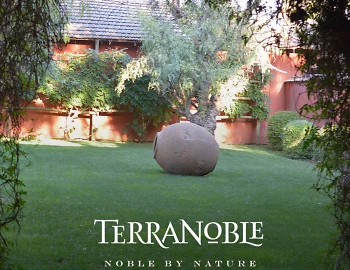
Cabernet Franc
Forefather of the Bordeaux varieties
The Cabernet Franc is one of the oldest varieties of Bordelais and a parent of three other red grapes in the Bordeaux assortment: Cabernet Sauvignon, Merlot and Carmenère. It is distinguished by its complex, flavourful bouquet of raspberry, graphite, violet, liquorice and white pepper. In addition, it presents round, crisp tannins which turn out less strongly than those of Cabernet Sauvignon. While the Cabernet Franc always appears as part of a blend in Bordeaux, it is pressed alone on the Loire. The most renowned appellations are Chinon and Bourgueil. Incidentally, the Cabernet originates not in Bordeaux but in the Spanish Basque Country. Cabernet owes its name to the Latin “carbon”, meaning black.

Carmenere
Incognito emigrant
The Carmenère had to emigrate to become famous. Once, it belonged to the main red varieties in Bordeaux. But it was not particularly loved by vintners there. It matured poorly, yielded little return and often turned out harsh and herbaceous. For this reason, it was replaced after the phylloxera epidemic by more low-maintenance varieties. Meanwhile, it found its way to Chile. In the warm climate of South America, the wines suddenly presented deep blackberry fruit, chocolate notes and velvety tannins. These were joined by a fine eucalyptus note, which became its trademark. The catch: for a long time, no-one knew that this had to be done with Carmenère. Instead, wine growers kept their vine stocks for Merlot. Since the error became apparent in 1997, this variety has experienced a phenomenal upturn. In Bordeaux as well, some châteaux are incorporating a dash of Carmenère in their grand crus.
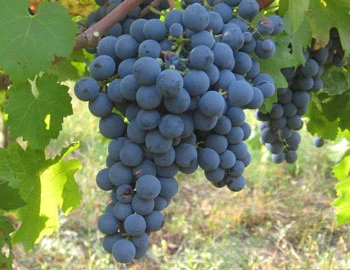
Malbec
New Home, New Fortune
The Malbec once belonged to the classic assortment of varieties from Bordeaux. But it was demanding to cultivate, and in the changeable climate of the Bordelais it often became green and herbaceous, so winemakers replaced it with Merlot in the middle of the 20th century. Luckily, the Malbec found a new home in Argentina. In 1868, a Frenchman brought the first stocks along to the land of the Andes. Today, the Malbec is the most-planted variety there. Especially in Mendoza, it shows what it can do: it yields very dark, well-structured wines with aromas of black fruit, violets and game. They just call out for an Argentinean steak! The Malbec has its origins in Cahors, in southwestern France. There, it is kept today under the name Cot. Due to their earthy tannins, in the middle ages the growths from this area were also called "the black wines of Cahors".
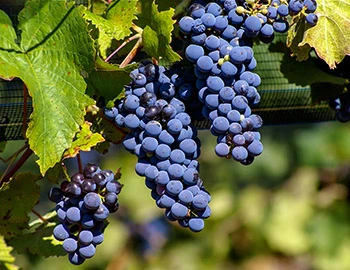
Cabernet Sauvignon
The backbone of Bordeaux
The Cabernet Sauvignon gives the Bordeaux its backbone, yielding deep violet wines with powerful tannins and endless ripening potential. It is the top dog in Médoc, and is placed in all five premier crus of Bordelais. When young, it often appears strict and unapproachable, but with advancing years, its tannins round off. It is wonderfully velvety, and yet always maintains its freshness. Typical flavours include cassis, graphite and cedar. Wherever Cabernet Sauvignon is found, Merlot is not far away. It complements the robust structure of Cabernet with softness, fruit and richness. The Cabernet Sauvignon is the most-exported vine in the world. It delivers persuasive qualities in Italy as an ingredient of the Super Tuscan, or as the flagship variety from California. There, it is lovingly titled “Cab Sauv”. Meat fans should be aware that it fantastically accompanies a grilled entrecôte. The family tree of Cabernet Sauvignon is surprising: its parents are Cabernet Franc and the white Sauvignon blanc.
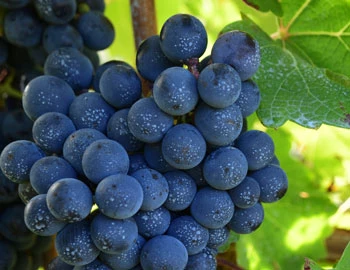
Maule
Maule: the heart of Chilean viticulture
With a cultivation area of nearly 30,000 hectares, Chile's largest wine cultivation area is also the southernmost sub-region of the Valle Central. Situated roughly 250 kilometers south of the capital of Santiago, the Cabernet Sauvignon variety and the Chilean specialty, Carménère, demonstrate their excellent potential here. Spanish immigrants in Maule had already established the first vineyards in the 16th century. In the last 20 years, the trend has moved towards fruitier wines with slightly lower alcohol content.

Valle Central
Valle Central: the heart of Chilean viticulture
Valle Central comprises the four most important wine-growing areas in Chile. It starts in the southern outlying districts of the capital, Santiago, and stretches around 400 kilometres to the south, ending at the city of Parral. Red Bordeaux varieties occupy over 70 percent of total vineyard area. Depending on how strongly the particular microclimate is influenced by the cool influence of the Andes or the Pacific, stylistically varied wines result. Specialties like Carménère, Syrah and Carignan are gaining ground.
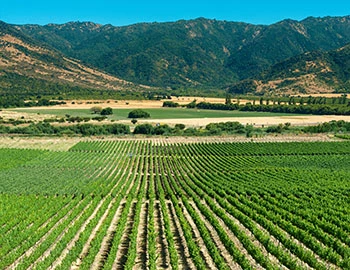
Valle Central
Valle Central: the heart of Chilean viticulture
Valle Central comprises the four most important wine-growing areas in Chile. It starts in the southern outlying districts of the capital, Santiago, and stretches around 400 kilometres to the south, ending at the city of Parral. Red Bordeaux varieties occupy over 70 percent of total vineyard area. Depending on how strongly the particular microclimate is influenced by the cool influence of the Andes or the Pacific, stylistically varied wines result. Specialties like Carménère, Syrah and Carignan are gaining ground.

Valle Central
Valle Central: the heart of Chilean viticulture
Valle Central comprises the four most important wine-growing areas in Chile. It starts in the southern outlying districts of the capital, Santiago, and stretches around 400 kilometres to the south, ending at the city of Parral. Red Bordeaux varieties occupy over 70 percent of total vineyard area. Depending on how strongly the particular microclimate is influenced by the cool influence of the Andes or the Pacific, stylistically varied wines result. Specialties like Carménère, Syrah and Carignan are gaining ground.

Chile
Chile – Where fortune came from tragedy
Wine-growing in Chile was born less out of economic reasons than lifestyle. Like the rest of the world, its aristocratic landowners admired everything that came out of France. They imitated French culture, built their haciendas in French architectural styles, and took trips to France. In 1851, the first French vines were brought back and formed the basis for producing quality wines.



